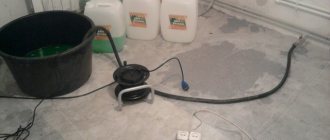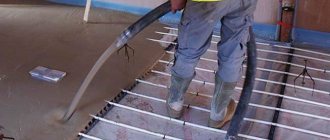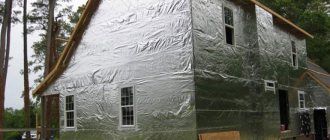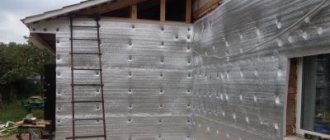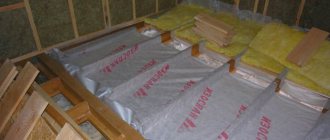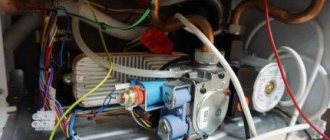Climate control systems are an effective, but at the same time quite capricious mechanism that can fail at the most unexpected moment. Heating equipment - at the height of the winter season, air conditioning systems - in the summer heat. The reasons are varied: from sudden power outages to wear and tear of individual components of the utility network. If you use water as the coolant for the climate system, then at subzero temperatures there is a high risk of the heating circuit freezing. This leads to irreparable consequences - destruction of pipelines and equipment. To avoid costly repairs, it is important to use non-freezing liquids - industrial antifreezes and coolants.
Glycol-based compositions are very popular in the industrial coolant market. The consumer has a choice: buy a ready-made composition with a package of anti-corrosion additives or purchase a solution of the glycol concentration of interest in bulk. In order to comply with all requirements, it is important to know the composition of glycol coolants, thermophysical properties, operating features and dilution rules.
Coolant requirements for the climate system
Any coolant is a working medium intended for the redistribution and transfer of thermal energy. A correctly selected and prepared composition allows you to optimize the operation of the circuit, increase the efficiency of the utility network, protect equipment from corrosion and minimize the risk of failure.
When choosing a coolant, it is important to consider the following features:
- The high heat capacity of the composition allows it to accumulate and deliver thermal energy to radiators with minimal losses.
- Wide range of operating temperatures corresponding to the climatic conditions of the region and the operating characteristics of the facility.
- Inertness of antifreeze in relation to pipes, radiators, circulation pump and other system equipment.
- Resistance to the formation of corrosion spots on the washed surface.
- Recommended service life of the composition.
The main advantage of modern glycol-based antifreezes for industrial premises is the ability to withstand negative temperatures, protect equipment from scale and rust formation. This is ensured by the introduction of anti-corrosion additives into the composition, which extend the service life of the coolant. In the case of products from the Hot Stream line from TECHNOFORM, the recommended service life is 5-10 years.
Compared to water, glycol solution:
- Has a viscosity 3-5 times higher. This requires the use of pumping equipment with a productivity of at least 10-15% higher.
- Less heat-intensive. At the same heating, glycol-based coolants accumulate and release approximately 15% less thermal energy.
- It is more fluid, which places increased demands on sealing materials and system connections.
With all the features described above, glycol has an incomparable advantage: even when cooled to extremely low temperatures (-60 degrees), the solution retains its original properties and does not freeze.
ABOUT THE USE OF NON-FREEZING LIQUIDS (ANTIFREEZE) IN BAXI BOILERS.
ABOUT THE USE OF NON-FREEZING LIQUIDS (ANTIFREEZE) IN BAXI BOILERS.
IS IT POSSIBLE OR NOT TO PUT ANTI-FREEZER INTO BAXI BOILERS?
THE IDEAL COOL CARRIER IS WATER. This means CLEAR WATER, and not water “from a puddle”, or from a well with an unknown composition, not rain, etc. Water that, when heated, will not form a hard deposit on the heat exchanger and other elements of the boiler, that will not enter into various chemical reactions, etc.
WATER HAS THE ONLY MINUS - AT LOW TEMPERATURES IT FREEZES(((
ACCORDINGLY, ANTI-FREEZE LIQUID HAS THE ONLY PLUS - ANTI-FREEZE LIQUID DOES NOT FREEZE!
We attribute everything else to ITS MINUSES.
PROPERTIES (MINUSES) OF ANTI-FREEZES (NON-FREEZING LIQUIDS):
-Viscosity. That is, the circulation is worse than if there was water in the heating system. The consequence is the likelihood of deposits, overheating of the heat exchanger, micro-boiling of the main heat exchanger of the boiler. Overheating is also associated with the appearance of noise, whistling, and knocking during operation of the boiler heat exchanger.
Sometimes it is necessary to install a more powerful heating system pump.
-Fluidity. Gaskets, rubber bands, connections will leak... Both in the boiler and in the heating system.
– Tendency to various chemical reactions inside the boiler and heating system. With aluminum, with iron, copper (the heat exchanger and tubes in the wall-mounted traditional BAXI boiler are copper) This is also due to the fact that the liquid can contain various additives, and can also be diluted with water of unknown composition.
An extreme option that periodically occurs is a fistula of copper tubes and the main copper heat exchanger. This is when small holes form in the copper, as if pierced with a needle. This process can be called copper electrolysis and occurs in the presence of electrical potential, which can come from anywhere. For example, it appears when the water heater adjacent to the boiler is turned on, etc.
ALL THE PEOPLE WHO CONTACTED US WITH THIS PROBLEM HAD NO FREEZE IN THE HEATING SYSTEM!
WE HAVE NEVER ENCOUNTERED DAMAGE TO PIPES AND HEAT EXCHANGER WHERE THERE IS WATER IN THE SYSTEM!
Of course, the problem does not occur in Baksi boilers, but in all boilers of any manufacturer that have copper parts (almost all household traditional wall-mounted boilers)
-The need to comply with the recommended concentration.
-The need to replenish the system either with the same liquid or with CLEAN WATER.
It is IMPOSSIBLE to dilute the liquid with “puddle water” and “well water”. It is also impossible to mix liquids of different types and manufacturers.
-Limited service life. For different manufacturers, from 1 year to 5 years at best.
In a year, it may already be dirty slurry, it may curl into flakes, release sediment that will clog the heat exchanger...
ABOUT THE TYPES OF NON-FREEZING LIQUID.
The Baksi company ALLOWS the use of two types of liquids in its boilers
In single-circuit boilers, antifreeze is based on ethylene glycol.
In double-circuit boilers, antifreeze is based on propylene glycol.
ETHYLENE GLYCOL is toxic, has a shorter service life (1-3 years), is more active and aggressive. Plus ethylene glycol - the price is lower, it comes in a concentration of -65, to obtain the recommended concentration it can be diluted with water...
PROPYLENE GLYCOL is food grade, non-toxic, has a longer service life (up to 5 years), is less aggressive, and causes less harm to the boiler. Disadvantages - the price is about 2 times higher than ethylene glycol, it often comes in a ready-made concentration, that is, it can no longer be diluted.
DO NOT use GLYCERIN-based liquids due to increased viscosity. When using such fluids, customers have encountered problems such as heat exchanger noise, etc.
Antifreeze and automobile antifreezes also CANNOT be used in heating systems.
Also, we do not consider alcohol as a coolant.
ADDENDUM FROM BAXI:
IMPORTANT NOTICE. Related to the design of boiler heat exchangers.
It is PROHIBITED to pour non-freezing liquid as a coolant into BAXI CONDENSING boilers, as well as into boilers of the Main, Main Four, Main 5 series. THAT IS, ANYTHING IS PROHIBITED.
It IS ALLOWED to pour other types of liquid into boilers, but the Baksi company, as well as service representatives, are not responsible for the consequences caused by the use of non-freezing liquids.
ABOUT ANTI-FREEZE MANUFACTURERS.
The Baksi company does not produce antifreeze liquids itself and does not recommend specific manufacturers.
The main thing is that the antifreeze is intended for HEATING SYSTEMS.
Our company, if necessary, uses antifreeze from different manufacturers, the main criterion is availability in the supplier’s warehouse and the ability to deliver quickly.
BUT! Due to the large number of FAKES, as well as the impossibility of quality control, we do not recommend liquids from specific manufacturers and do not sell anti-freeze liquids in our store!
We cannot conduct an examination of each canister of liquid, we cannot know where it actually came from from a trusted supplier, we do not know what is actually filled inside the canister, even if a quality certificate is attached to each batch. Therefore, even if, at your request, we purchased and poured liquid into your heating system, we are not responsible for its quality, as well as for possible damage caused to the boiler and system.
That's why. WHAT SHOULD YOU DO?
IF THERE IS NO CHOICE. If your house is located in the region, IF YOU DO NOT LIVE IN THE HOUSE, or you don’t live yet, because there is construction going on, repair work, then DEFINITELY FILL IN AN ANTI-FREEZE LIQUID.
Where there is a construction site, there is only antifreeze. Because there is a high risk of defrosting the boiler and system.
If where you live there are frequent, permanent power cuts in the winter. Let me remind you that Baksi boilers are energy dependent; without electricity, the boiler will not work. At minus 30 in the winter, the boiler itself, if it is not working, that is, there is a fault or there is no electricity, can defrost in just a few hours through a coaxial chimney that goes outside, while the boiler room will still be warm.
The damage from a defrosted heating system or a defrosted boiler is many times higher than problems with the boiler that are caused by the use of antifreeze.
If this is a city house, you live in it with your family, someone is always at home, you can fill the water. If the electricity goes out or if the boiler breaks down, people will take measures to prevent the boiler and the system from defrosting.
By the way, liquid pleasure is not cheap.
SINCE WE ARE A SERVICE SERVICE FOR BAXI BOILERS, THE ISSUE OF USING ANTI-FREEZE IS CONSIDERED BY US EXCLUSIVELY FROM THE POSITION OF THE WELFARE OF THE BAXI BOILER.
-Where possible, we fill in the ideal coolant - CLEAN WATER.
WHEN POSSIBLE, THE USE OF ANTI-FREEZE SHOULD BE REFUSED.
HOWEVER, IN THE EVENT OF DEFROSTING OF THE BOILER OR SYSTEM, ONLY YOU AS THE OWNER BE RESPONSIBLE!
-Where there is a danger of defrosting, fill in anti-freeze at your own risk. The Baksi company and service representatives are not responsible for breakdowns and problems associated with the use of antifreeze.
-If possible, use propylene glycol based fluids. This is the lesser evil.
-Dilute antifreeze with PURE WATER ONLY. For example, distilled.
-For manufacturers, choose for yourself, there are no specific recommendations, and there cannot be, due to the large number of fakes and the impossibility of quality control from batch to batch.
WE ARE NOT RESPONSIBLE FOR THE DECISION YOU MAKE!
ONLY YOU DECIDE TO FILL ANTIFREEZE OR WATER!
YOU AND ONLY YOU, AS THE OWNER OF THE BOILER AND SYSTEM, ARE FULLY RESPONSIBLE FOR YOUR DECISIONS AND FOR YOUR PROPERTY!
How to properly dilute the coolant and is it worth doing?
First, let's answer the main question: if you are interested in the possibility of a process from the point of view of thermophysics, yes, it is possible. Before you begin preparing the solution for pouring into the system, you need to carry out a number of preparatory measures. First of all, calculate the required proportions taking into account the concentration of the original solution and the freezing point of the finished product after dilution. You can mix water and antifreeze in two ways: by pouring separately until the operating pressure in the circuit is reached, or by connecting the components of the solution in advance. The first method is rarely used, because Separate addition of water and glycol is fraught with serious problems:
- Uneven heating in certain sections of the pipeline due to poor mixing of liquids.
- Interruptions in the operation of the pump or its stop caused by heterogeneity of the medium.
- Foaming of the solution, the consequences can only be eliminated by completely draining the antifreeze from the system.
Now about the advisability of dilution. The simplest calculations show that it is more convenient and profitable to immediately order a glycol solution of the required concentration from the manufacturer than to purchase a product with a higher concentration and independently bring it to operating parameters.
Is it possible to mix different standards?
Here the situation is more interesting. If antifreeze of different colors, but of the same group, can be interchanged, then different products can cause unexpected reactions in the system, only aggravating the situation of your radiator and other components of the cooling system.
Is it possible to mix antifreeze of different subgroups? You need to understand that G11 and G12 have completely different additives: the former are aimed at creating a film, the latter at eliminating rust. It is almost impossible to control the mixing of active components. Yes, sediment may not fall, but the film will significantly reduce the cooling efficiency. This is because green antifreezes reduce the diameter of pipes and other components. The temperature drops, as do the cooler characteristics. A kind of “thrombus” may even form, which can cause the radiator to fail.
It all depends on the final volume of the diluent liquid. If you pour up to half a liter, then there will be no consequences. But in the future you need to fill in the “native” cooler.
Is it possible to dilute the coolant with water?
It is better to ask this question to the manufacturer. Some working compositions are not recommended to be diluted with water, others are perfectly diluted without loss of thermophysical properties. For example, concentrated solutions of glycols can be purchased in bulk and then independently brought to a given working concentration. The only requirement is to use demineralized water when diluting, because... High salt content may cause sediment to form.
Is it possible to mix red, yellow, blue and green antifreeze?
According to the Volkswagen scale, class G11 is blue, green, G12 is red, orange, lilac, G13 is pink, purple or yellow. Which ones can be mixed with each other, we will consider further.
The belief that yellow cannot be diluted with red, and green must be added exclusively with green, is erroneous. Since you should be guided by class, and not color, the presence of coolant of different colors is not an obstacle to mixing. So, green class G11 can be easily added to blue of the same class. Red can be complemented with orange, and purple with yellow. The only negative is that the result is an indistinct color, and it is not easy to control the production.
Features of dilution of ethylene glycol
To dilute concentrated ethylene glycol, demineralized softened water with a minimum content of magnesium and calcium salts is used. If anti-corrosion additives are added during the dilution process, the water hardness should not exceed 5 mg per equivalent. For convenience, you can use the following table:
| Freezing point of the working composition | Volume of ethylene glycol, in liters | Volume of water, in liters |
| -20 °C | 54 | 60 |
| -25 °C | 60 | 40 |
| -30 °C | 65 | 35 |
| -40 °C | 77 | 23 |
Important! It is not recommended to use pure ethylene glycol. It has increased viscosity and low heat capacity, which negatively affects the efficiency of the equipment.
Results
The confusion about the colors of antifreeze and antifreeze infuriates any motorist. During the 2 years that the cooler is in operation and the driver does not bother replacing it, resilient manufacturers come up with new standards and variations of their products, which only plays into the hands of marketers, but not the consumer. You also can’t stock up on coolant for future use due to the limited shelf life. Try to choose one manufacturer, find an intelligent seller who will explain in detail what the difference between the compositions is. And you yourself will learn to read the list of ingredients in order to significantly save on the service in the future.
Rules for diluting propylene glycol
To prepare a coolant based on concentrated propylene glycol, demineralized water is used. Dilution in different proportions, by volume or weight, is acceptable. For convenience, you can use the following information:
| Volume concentration in % | Density at 20°C, g/cm3 | Freezing temperature, °C |
| 25 | 1,023 | -10 |
| 30 | 1,029 | -13 |
| 35 | 1,033 | -17 |
| 40 | 1,037 | -21 |
| 45 | 1,042 | -26 |
| 50 | 1,045 | -32 |
Propylene glycol coolants are not used in systems with galvanized pipes; prolonged exposure leads to peeling of the material.
Keep in mind that when preparing working trains, precautions and fire safety measures must be observed. Work may only be carried out in a well-ventilated area, wearing personal protective equipment. But it is better to buy a ready-made solution and entrust pouring the liquid into the system to professionals.
Important! Do not mix coolants from different manufacturers. Each brand uses its own package of corrosion inhibitors, which can conflict in composition and lead to loss of properties.
Is it possible to mix antifreeze of the same color from different brands?
Let's imagine a situation: it is necessary to urgently top up, but the filled brand of coolant is not available nearby. The question comes up: is it possible to mix antifreeze of different colors, and, especially, brands.
The answer is simple: first you should check the correct type of fluids. As mentioned above, the color is chosen by the manufacturer. As a result, one company has green refrigerant class G11, another has G12. Yellow color usually denotes coolant type G13, but can become G12+ specifically for the automaker. If both are of the same class, but from different manufacturers, feel free to mix. The main thing is that the plant maintains the appropriate standards; there are still no guarantees.
Conclusion
Glycol coolant is more technologically advanced, safe and effective than water. In some operating conditions it is indispensable. On sale you can find both ready-made formulations and solutions of glycols of various concentrations with a package of additives, which theoretically can be adjusted to the required parameters.
Self-mixing of ethylene and propylene glycol with water is carried out before filling the system, taking into account the manufacturer’s recommendations. But it is best to purchase a solution of ethylene or propylene glycol in bulk. A variety of options, high-quality anti-corrosion additives made in Belgium - all this guarantees long-term and productive operation of the system.
You may be interested in the following products
| Name | Price per kg, rub. VAT included | Purchase |
| Ethylene glycol solution | from 37.65 rub./kg | Order |
| Propylene glycol solution | from 37.65 rub./kg | Order |
| Boiler water | from 33.25 rub./kg | Order |
Color characteristics
Antifreeze of different colors was originally developed to work with a specific group of metals. At the moment this is not important, although previously car manufacturers tried to introduce this gradation by offering recommended “dyes” for the compositions. Currently the categories are as follows:
- G11 – green, blue and variations;
- G12 – yellow and red, poisonous orange;
- G13 – purple.
This is all theory. In practice, many manufacturers color antifreeze as they please, since there is no strict standardization. So G11 has a “spread” from blue to crimson, G12 can be green, and G13 can be completely yellow. The result is confusion and it becomes increasingly difficult for the car owner to navigate the differences in composition and their purpose.

